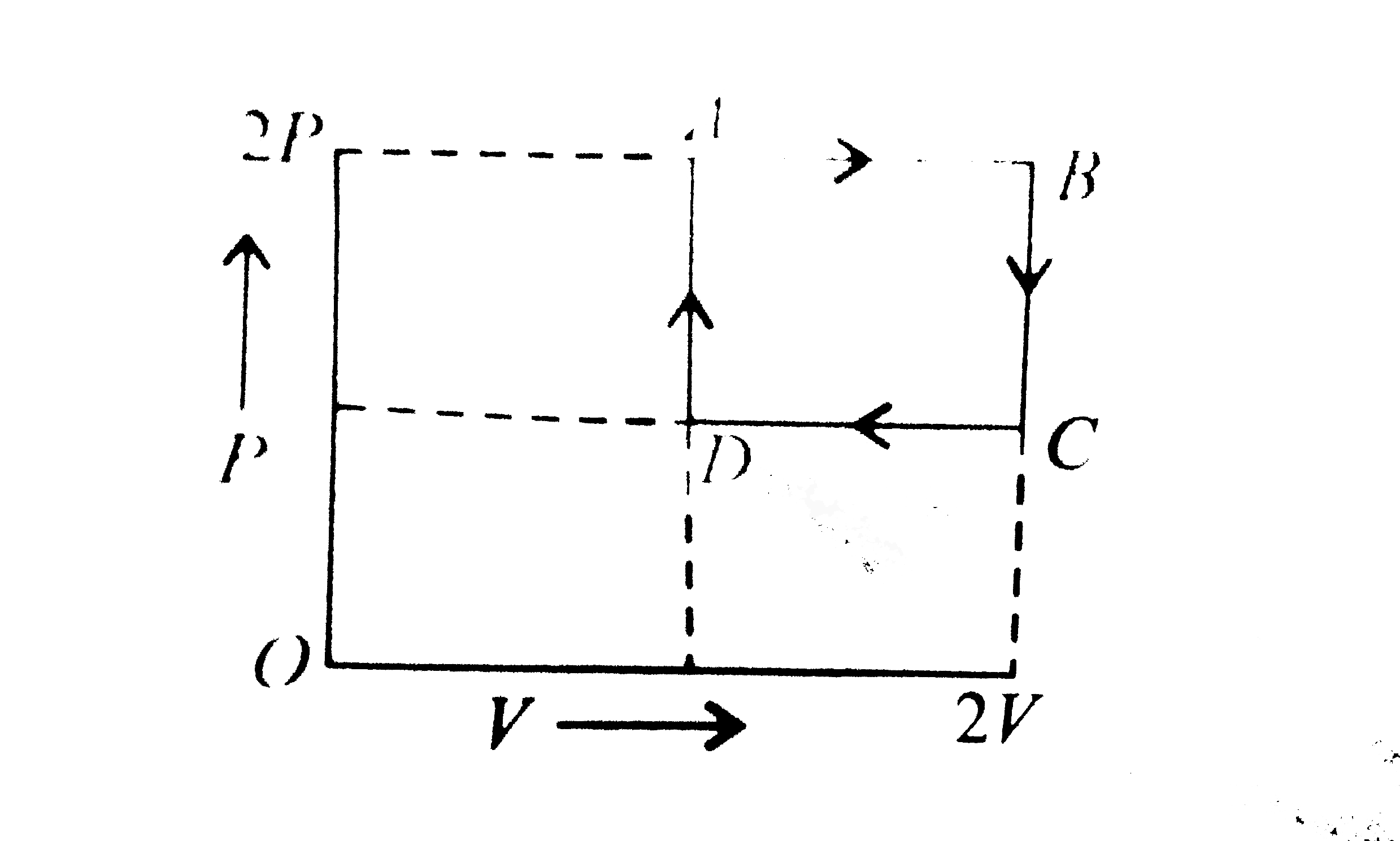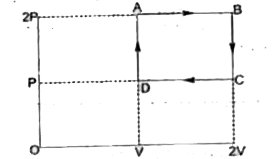The state of a mole of an ideal gas changed from state A at pressure 2P and volume V follows four different processes and finally returns to initial state A reversibly as shown below in the graph. By interpreting the graph, answer the following questions.

what would the be total done by the gas?
−PV
PV
0
None of these
Work done =−PΔV
or −P(2V−V)=−PV
Topper's Solved these Questions
- THERMODYNAMICSBOOK - CENGAGE CHEMISTRYCHAPTER - THERMODYNAMICSEXERCISE - Exercises (Multiple Correct)
50 Videos
- THERMODYNAMICSBOOK - CENGAGE CHEMISTRYCHAPTER - THERMODYNAMICSEXERCISE - Exercises (Single Correct)
62 Videos
- THERMODYNAMICSBOOK - CENGAGE CHEMISTRYCHAPTER - THERMODYNAMICSEXERCISE - Exercises (Subjective)
70 Videos
- STOICHIOMETRYBOOK - CENGAGE CHEMISTRYCHAPTER - STOICHIOMETRYEXERCISE - Archives Subjective
33 Videos
Similar Questions
The state of a mole of an ideal gas changed from state A at pressure 2P and volume V follows four different processes and finally returns to initial state A reversibly as shown below in the graph. By interpreting the graph, answer the following questions.

What would be the work done in state B→C?
View SolutionThe state of a mole of an ideal gas changed from state A at pressure 2P and volume V follows four different processes and finally returns to initial state A reversibly as shown below in the graph. By interpreting the graph, answer the following questions.

In state D to state A, what kind of process is followed?
View Solution
Knowledge Check
The state of a mole of an ideal gas changed from state A at pressure 2P and volume V follows four different processes and finally returns to initial state A reversibly as shown below in the graph. By interpreting the graph, answer the following questions.

What would be the work done in state B→C?A−PVBPVC2PVDZeroThe state of a mole of an ideal gas changed from state A at pressure 2P and volume V follows four different processes and finally returns to initial state A reversibly as shown below in the graph. By interpreting the graph, answer the following questions.

what would the be total work done by the gas?A−PVBPVC0DNone of the aboveThe state of a mole of an ideal gas changed from state A at pressure 2P and volume V follows four different processes and finally returns to initial state A reversibly as shown below in the graph. By interpreting the graph, answer the following questions.

What would be the heat obsorbed by the system in this cyclic process?A−2PVBZeroC2PVDPV
The state of a mole of an ideal gas changed from state A at pressure 2P and volume V follows four different processes and finally returns to initial state A reversibly as shown below in the graph. By interpreting the graph, answer the following questions.

Which is the kind of process followed from state A to state, B?
View SolutionThe state of a mole of an ideal gas changed from state A at pressure 2P and volume V follows four different processes and finally returns to initial state A reversibly as shown below in the graph. By intercepting the graph answer the following questions:

In state D to state A what kind of process is followed?
View SolutionThe state of a mole of an ideal gas changed from state A at pressure 2P and volume V follows four different processes and finally returns to initial state A reversibly as shown below in the graph. By intercepting the graph answer the following questions:

Which is the kind of process followed from state A to state B?
View SolutionAn ideal gas change from state a to state b as shown in Fig. what is the work done by the gas in the process?

View SolutionThe volume of one mole of an ideal gas changes from V to 2V at temperature 300 K. If R is universal gas constant, then work done in this process is
View Solution
